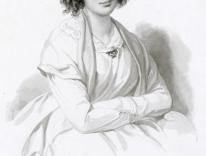 How should one approach Shadows in the Night, the new Bob Dylan collection of American standards once sung by Frank Sinatra? With curiosity, of course, or curiosity tinged with dread, or a roll of the eyes at the adoption of this latest persona. Or, if you're among the legions of indefatigable disciples and completists, with advance purchase and ravenous consumption. After a critic friend warned me a couple of months ago the disc would include "Some Enchanted Evening" from the Rodgers and Hammerstein musical South Pacific, we traded emails trying to one-up each other with versions of the lyric "once you have found her never let her go" in imagined Dylanese (his winning entry: "Once yubba fondue Lehigh Lego glue"). Thus add ridicule to one of the possible prejudgments, though both of us should have known better than to underestimate Dylan.
How should one approach Shadows in the Night, the new Bob Dylan collection of American standards once sung by Frank Sinatra? With curiosity, of course, or curiosity tinged with dread, or a roll of the eyes at the adoption of this latest persona. Or, if you're among the legions of indefatigable disciples and completists, with advance purchase and ravenous consumption. After a critic friend warned me a couple of months ago the disc would include "Some Enchanted Evening" from the Rodgers and Hammerstein musical South Pacific, we traded emails trying to one-up each other with versions of the lyric "once you have found her never let her go" in imagined Dylanese (his winning entry: "Once yubba fondue Lehigh Lego glue"). Thus add ridicule to one of the possible prejudgments, though both of us should have known better than to underestimate Dylan.
Which isn't to say Shadows in the Night is a great record. Everyone has accepted that a new Blood on the Tracks or Desire, to say nothing of Blonde on Blonde or Highway 61 Revisited, is not in the cards. But of the studio recordings it's no Infidels or Knocked Out Loaded or Shot of Love; four listens in, I can say easily and with relief that it's not an embarrassment. It's definitely weird; it may even be good.
Nashville Skyline, Dylan's foray into country, comes to mind, since like that record Shadows in the Night exhibits occasional vocal allusions to a specific genre. Musically it seems in keeping with 1997's Time Out of Mind, produced by Daniel Lanois with Jack Frost, who gets sole production credit on the new record, and who coaxes strange and supple backing from Charlie Sexton on guitar and Donny Herron on pedal steel guitar; melancholy trombone, French horn, and trumpet limn some of the tracks in a way that's almost, but not quite, like what you could have heard coming from a 1940s bandstand.
But it's the ever-lurking "not quite" that makes the record reliably and unmistakably Dylan. Dan Chiasson noted recently in The New York Review of Books (subscription) that "his voice made it clear from the start that finding Dylan in the wilderness of his own self-presentation--ever-changing, often defiantly strange or surprising--was the primary pleasure afforded by his art." Dylan presents himself as a crooner on Shadows in the Night, but he's no more a Frank Sinatra than he could have been a Johnny Cash in briefly adopting country; the black bow-tie and white dinner jacket he sports on the CD cover seem suited less to the Copacabana or the Stardust than to a neighborhood dive or a slot-machine parlor several blocks off the Strip. He's once again strange and surprising, the voice -- define it as you will -- his alone.
One of the well-known pleasures of listening to Dylan is hearing how he finally reveals a rhyme or how he'll subvert expected lyric patterns and images. Pairing "is there a hole for me to get sick in" with "the sky's not yellow, it's chicken," as he does across six intervening lines on Highway 61 Revisited's "Tombstone Blues," is among the hundreds of examples, and I cite it here because it's one that even my kids have long since come to recite. That the words and music on Shadows in the Night belong to Johnny Mercer and Irving Berlin and Buddy Kaye might mitigate against such enjoyments, but the upside is that new and different pleasures are sprung. "Some Enchanted Evening" is not among them, alas, and "Lucky Old Sun" has a bit of an unfortunate feel (contrast it to, for example, this version by Ray Charles). But "Autumn Leaves" has the beguiling oddness of Isabella Rosellini's version of "Blue Velvet" in David Lynch's film, while Berlin's "What I'll Do" begs the same kind of relistening I generally reserve for Sinatra's "If You Are But a Dream": "What'll I do/when I'm alone/with daydreams of you/that won't come true/What'll I do?" in the voice of a seventy-three-year old Dylan quavers with regret and puzzlement and perhaps a little surprise that it has come to this. What Dylan for all his documented shape-shifting and hat-switching has done is no less surprising, though it only reaffirms his defiant strangeness: He's shown he can be almost, if not quite, charming.
Please email comments to [email protected] and join the conversation on our Facebook page.
Share
Previous Story
David Carr
Next Story
Don't Call Us Libertarians!


